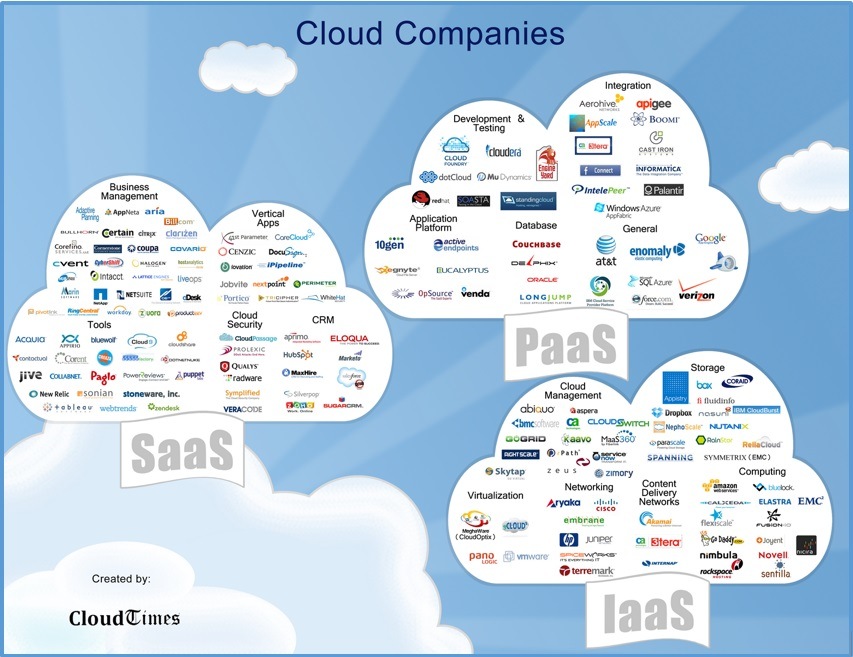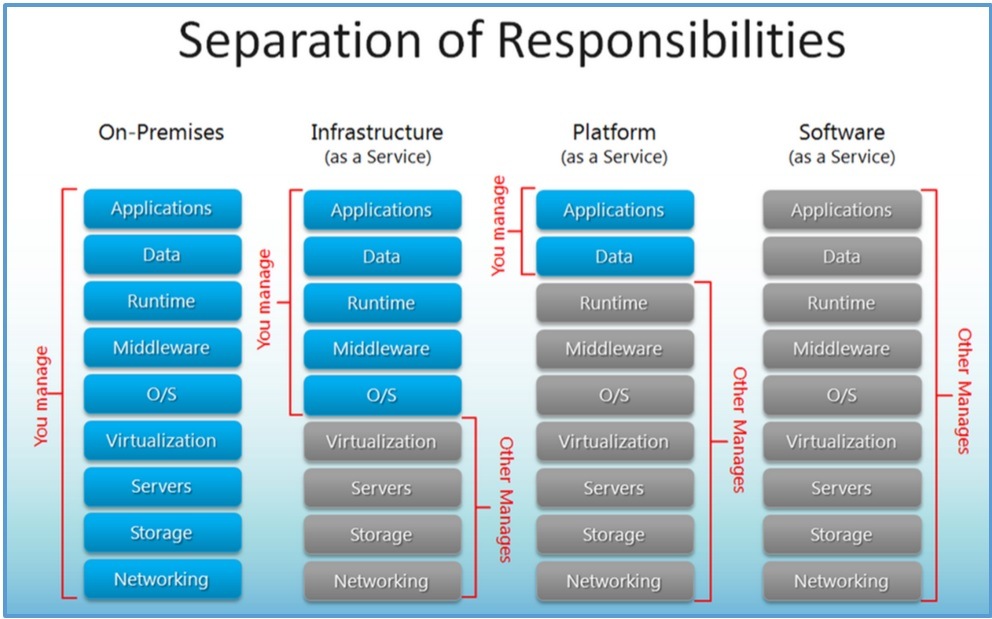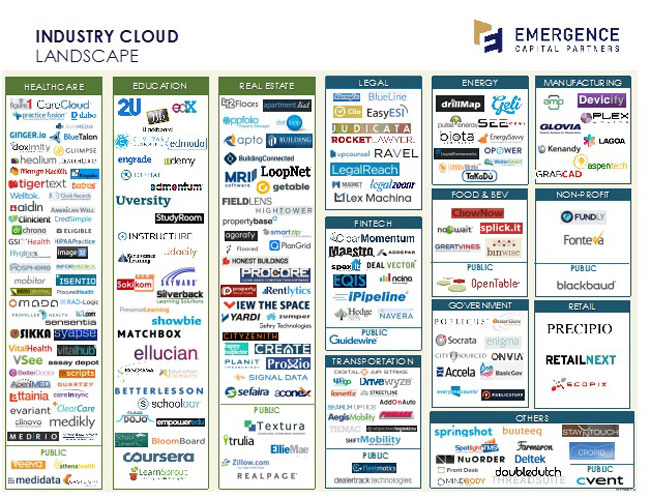Companies are exploring moving their existing business process, operations and infrastructure into the digital era to be competitive. How is that done? Platform as a service (PaaS) helps us start the conversation of migration and transformation from legacy operating models to elastic, scalable and dynamic models for faster business outcomes. Cloud Foundry is a PaaS that can help businesses make that transition into digital.
Cloud Foundry is the brain child of Derek Collison, developed by a small team from Google with their initial release in 2011. The vision was an open source, multi-cloud, multi-vendor, cloud computing platform as a service (PaaS). Today EMC, VMware and GE. The goal is accelerate your business using fast-cycle innovation cloud applications. This of course is compared to the stack today that is likely very costly to maintain, extend or build new functionality into.
What you need to know
Cloud Foundry is a platform as a service (PaaS) offering supporting customers like Southwest, hulu, Phillips, BMW, GE and Netflix. They do have competitors including: dotcloud, Oracle Cloud, and IBM Bluemix, Red Hat OpenShift Commons and Microsoft Azure.
The Big Picture
You have three PaaS options 1. Open Source Software (OSS) 2. Pivotal Cloud Foundry (Pivotal CF) and 3. Pivotal Web Services (PWS).
Source: (Cloud Times, 2011)
Let’s Go Deeper
The Open Source option is implemented on OSS Cloud Foundry. This is a fully open source platform and supports spring (popular application framework for java development), Hadoop (popular Apache software that allows distributed processing of large data sets across clusters of computers using simple programming models), redis (data structure server – networked in-memory, key-value data store with optimal durability), RabbitMW (enterprise messaging system based on AMQP standard), MADlib (open source library for scalable in-database analytics) and Apache Tomcat (application server) and Apache HTTP server (authentication, security and content delivery).
The Pivotal Cloud Foundry option provides extra tools for installation and administration (not part of OSS). Specifically Pivotal Cloud Foundry add three capabilities.
- Provisioning – include provisioning (creating your cloud ready application in Java, Ruby, Python, Go, PHP or Node.js. This included attaching production ready databases, messages and mobile or big data services and the servers, network and storage.
- Smoother Deployments – automated deployments cross-platform, central logging, monitoring and recovery focused on zero down time
- Management and orchestration – Clear dashboards to administer all applications, monitor, scale and upgrade applications including auto-scaling, high availability across multiple regions and full application lifecycle control across the infrastructure
Pivotal Web Services
Web services help to simplify build and deploy cycles (default buildpacks, bind services to your applications). Default build packs for Run apps written for Java, Grails, Play, Spring, Node.js, Ruby on Rails, Sinatra or Go.
“How does it work? When you push your application, the system iterates over a list of default buildpacks until one is found for your app. It installs the correct runtime (JVM, Ruby or JavaScript interpreter), containers (web servers), supporting libraries, and packages (Ruby gems or NPM packages). Buildbacks then put your app bits into the runtime or container and builds the start command. This frees you from configuring the container or dealing with memory settings. Retain fine-grained control of your dependencies by forking a buildpack (Pivotal Web Services, 2015).”
When we are talking binding of services to your application, this is other third party databases, email services, and monitoring which can quickly be added to dev, staging or production. This ensure your application is portable across multipole environments and providers.
PWS also adds powerful tools for operations and monitoring providing drill down in to services is use or tied to applications. New Relic is included in the PWS zero-touch configuration. Active health management with monitoring and high-availability is also provided. Streamlined real-time logging allows to track all events for all applications and across platforms. There is also a web console built for team-base agile development with software by spaces (although in the early stages).
Overall, PWS encapsulates services, extending buildpacks and exploiting the full power of your existing data stores for application usage and data accessibility.
Is this new?
No. These tools all have been around. Ruby was developed in the mid-1990’s, with heavy influence from Perl, Smalltalk, Eiffel, Ada and Lisp. VMware was founded in 1998, with their first major release in 2003. Amazon Web Services (AWS) was launched in 2006, with mainstream adoption occurring in 2013 when AWS was awards the Authority to Operate (ATO) from the U.S. Department of Health and Human Services (HHS) under the Federal Risk and Authorization Management Program (FedRAMP). None of these technologies just emerged in the last year or two or three.
Source: (Remde, 2011)
Today’s State of Adoption
The reality is this is not new, but has a shiny new packaging. Many organizations likely have parts of this solution in their environment today. However, without widespread adoption. In order to see the benefits of agile development, cloud computing with auto-scaling, and the rapid development cycles your organization does need to buy-in. With clear buy-in from leadership the advances and impact these technologies will have on business outcomes will be unmatched.
Business are struggling to compete across industries; cloud platforms are remove those roadblocks.
Source: Shirk, 2015)
References
Babcock, C. (2015). Red Hat OpenShift Commons Adds Fuel To Cloud Foundry Competition. Retrieved August 20, 2015, from http://www.informationweek.com/cloud/platform-as-a-service/red-hat-openshift-commons-adds-fuel-to-cloud-foundry-competition/d/d-id/1319264
Cloud Foundry Makes Faster, Easy. (2015). Home – Cloud Foundry. Retrieved August 20, 2015, from https://www.cloudfoundry.org/
Cloud Times. (2011). Top PaaS, SaaS and IaaS Cloud Companies. Retrieved August 20, 2015, from http://cloudtimes.org/2011/11/30/top-paas-saas-and-iaas-cloud-companies-by-cloudtimes/
CoreLogic. (2015). A Year of Innovation Cloud Foundry Lessons Learned. Retrieved from http://www.cfsummit.com/sites/cfs2015/files/pages/files/cfsummit15_leurig.pdf
Handy, A. (2011). The top five platform-as-a-service offerings you should know about. Retrieved August 20, 2015, from http://sdtimes.com/the-top-five-platform-as-a-service-offerings-you-should-know-about/2/
Pivotal. (2015). Pivotal Cloud Foundry | Platform as a Service. Retrieved August 20, 2015, from http://pivotal.io/platform-as-a-service/pivotal-cloud-foundry
Pivotal Web Services. (2015). Pivotal Web Services | Features. Retrieved August 20, 2015, from https://run.pivotal.io/features/
Remde, K. (2011). SaaS, PaaS, and IaaS.. Oh my! (“Cloudy April” – Part 3) (Online Image). Retrieved August 20, 2015, from http://blogs.technet.com/b/kevinremde/archive/2011/04/03/saas-paas-and-iaas-oh-my-quot-cloudy-april-quot-part-3.aspx
Shirk, G. (2015). The Evolution of the Industry Cloud: A Q+A with Gordon Ritter of Emergence Capital (Online Image). Retrieved August 20, 2015, from https://www.box.com/blog/the-evolution-of-the-industry-cloud-a-qa-with-gordon-ritter-of-emergence-capital/
Tomala-Reyes, A. (2015). What is IBM Bluemix? Retrieved August 20, 2015, from http://www.ibm.com/developerworks/cloud/library/cl-bluemixfoundry/



